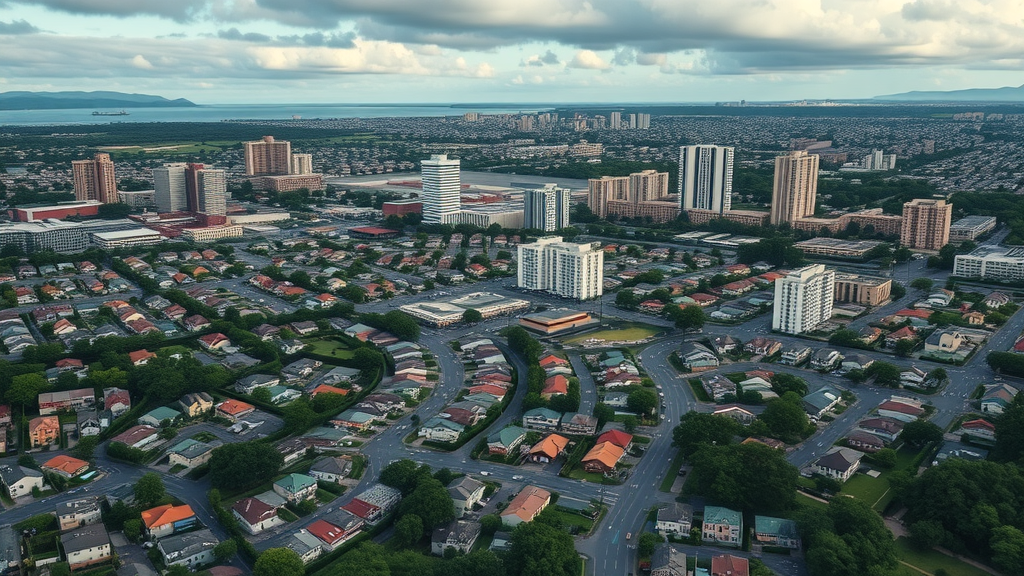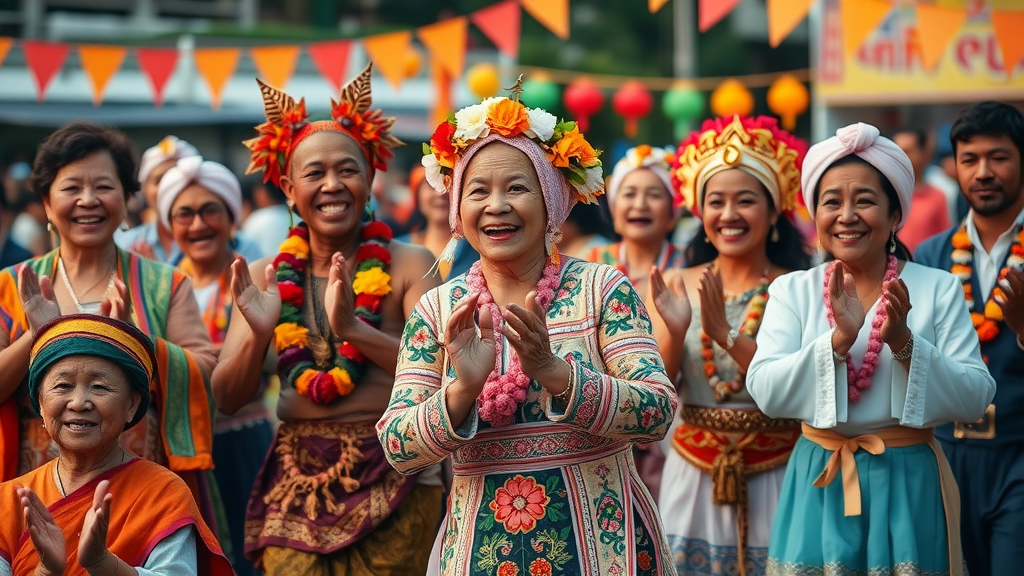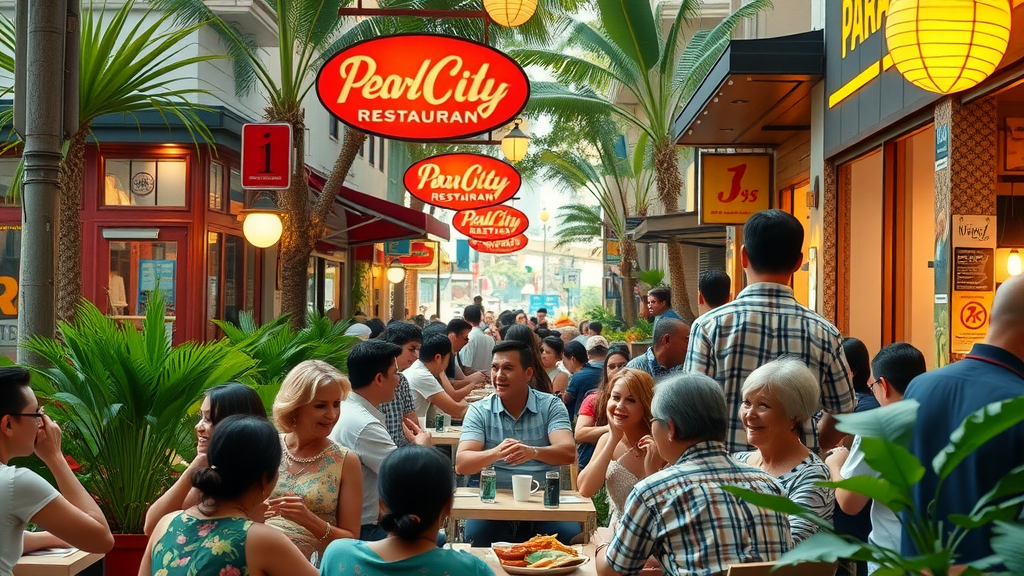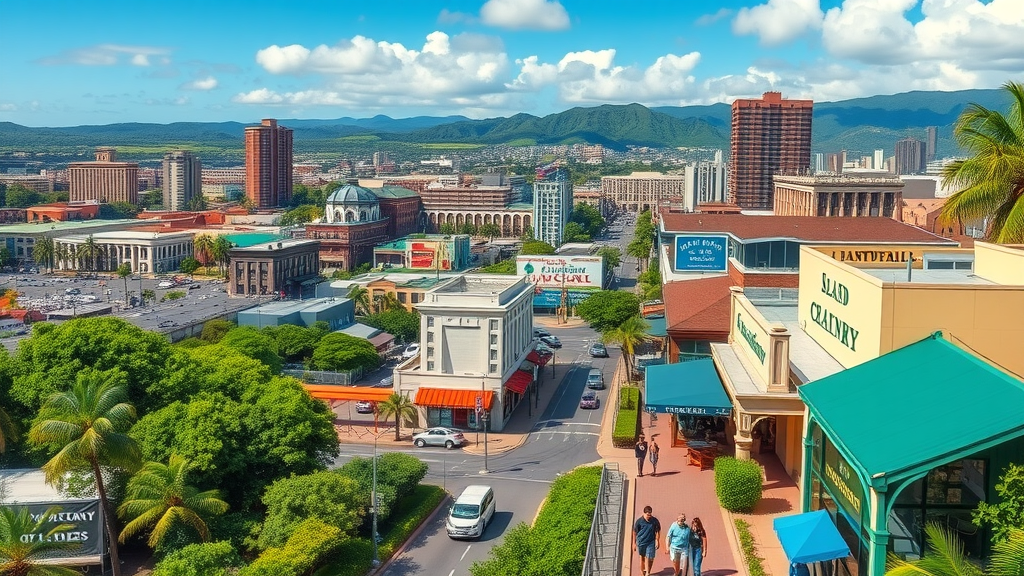Did you know Pearl City’s median household income is nearly $10,000 higher than the Honolulu County average, and that more than 47,000 people call this vibrant suburb home? Pearl City demographics reveal a dynamic, ever-evolving community that outpaces many similar Hawaiian locales in diversity, opportunity, and resilience. Dive in to discover the surprising shifts, hidden trends, and the compelling mosaic that makes Pearl City a unique destination and home.
Unveiling Pearl City Demographics: Shifting Trends and Hidden Surprises
The story of Pearl City demographics is one of transformation—marked by subtle shifts and surprising trends that set this Hawaii community apart. Nestled just outside the urban hum of Honolulu, Pearl City enjoys the convenience of city proximity while maintaining a distinct suburban pulse. Over recent years, population demographics here have seen slight but meaningful shifts, reflected in statistics like median household income, housing units, and the steady arrival of new families drawn by both opportunity and community spirit.
Unlike the state of Hawaii’s largest urban centers, Pearl City stands out for its balanced blend of longtime local residents and recent arrivals seeking its celebrated schools, rich cultural fabric, and access to natural and metropolitan amenities. As census data reveals, each age group and ethnic group in the area contributes uniquely to city life, creating a vibrant, interconnected social ecosystem. These shifts aren’t just numbers—they’re stories waiting to be told, each helping redefine what it means to live in Pearl City.

What You'll Gain from Exploring Pearl City Demographics
- Understand the current population makeup of Pearl City
- Discover median household income and housing unit details
- Compare Pearl City and Honolulu County demographic trends
- See how age, race, and economics shape city life
A Statistical Snapshot: Key Pearl City Demographics at a Glance
| Category | Pearl City | Honolulu County Average |
|---|---|---|
| Population | 47,698 | 1,016,508 |
| Median Age | 42.4 | 41.1 |
| Median Household Income | $99,750 | $89,900 |
| Number of Housing Units | 14,500+ | 358,000+ |
“Despite its proximity to Honolulu, Pearl City maintains a distinct demographic character that continues to evolve in unexpected ways.”
Breaking Down the Numbers: Pearl City Demographics Detailed

Population Growth and Density: Pearl City vs. Honolulu County
Over the past decade, Pearl City demographics have shown stable growth, with a current population nearing 48,000. With a population density of roughly 6,200 people per square mile , the area offers a middle ground between urban density and suburban space. Compared to Honolulu County , which maintains a density of about 1,650 residents per square mile, Pearl City strikes a balance by avoiding both the extremes of crowded city living and the isolation of rural communities.
This mix is enhanced by the range of household types, as families, retirees, and young professionals all live in Pearl City . The city’s size supports robust infrastructure—access to quality schools, shopping, and transportation—without the congestion found in more densely packed parts of Oahu. Census Bureau data indicates a continued trend of moderate but steady population increase, reflecting sustained appeal for those drawn to its lifestyle and opportunities.
Household Income in Pearl City: Beyond the Median
- Median household income in Pearl City
- Trends in average household income
- Household income comparison with Honolulu County
The median household income in Pearl City is approximately $99,750—significantly outperforming both the Honolulu County and state averages. Not only does this point to overall prosperity, but it confirms Pearl City’s reputation as a desirable home base for professionals and families who seek solid earning potential and upward mobility. The average household income trend underlines a healthy local economy, with a broad middle class and pockets of affluence.
This financial stability has a direct impact on community facets such as local shopping habits, school funding, and real estate values—making income in Pearl City a key metric for anyone evaluating the area’s long-term outlook. At the same time, challenges remain, particularly regarding the cost of living and the need for affordable housing units to prevent economic disparities from growing. These socioeconomic nuances are critical for current and future residents to understand.
Median Age and Family Structure: Who Calls Pearl City Home?
The median age in Pearl City sits at 42.4 years—slightly higher than the county average but reflective of a mature, family-oriented community. A significant proportion of residents are middle-aged professionals or older adults, suggesting a stable base of long-term homeowners and community members. That said, Pearl City’s family structure is evolving, as more multi-generational households and young families settle in the area, drawn by educational opportunities and a sense of security.
These demographic patterns encourage a welcoming atmosphere for children and elders alike, with community resources and infrastructure designed to support all ages. The growing presence of families with children enriches schools, parks, and extracurricular opportunities, while a sizable senior population helps preserve long-standing cultural traditions. Together, these trends reinforce Pearl City as an inclusive, tight-knit community.

Housing Units and Living Arrangements in Pearl City
Pearl City’s more than 14,500 housing units reflect the suburb’s status as both a legacy neighborhood and a hub for new arrivals on Oahu. The mix of residential single-family homes, low-rise apartments, and modern condos encourages a wide range of living arrangements , appealing to everyone from long-term homeowners to recent graduates and downsizing retirees. These plentiful housing choices distinguish Pearl City from some more constrained markets in Hawaii, strengthening its sense of community and social mobility.
With a high occupancy rate and diverse real estate options, Pearl City meets the demands of growing families, couples, and single professionals. The area’s housing market trends show continued demand, with steady property values and a robust inventory designed to support the city’s evolving needs. Residents also benefit from well-maintained neighborhoods and convenient proximity to shopping, recreation, and transit.
The Demographic Mosaic: Race, Ethnicity, and Cultural Identity in Pearl City
- Racial breakdown and ethnic diversity in Pearl City
- Comparison with Oahu’s racial makeup
- Cultural landmarks and community traditions
Pearl City is a microcosm of Hawaii’s broader diversity, home to a vibrant blend of ethnic groups that includes significant populations of Native Hawaiian , Pacific Islander, Asian (especially Japanese and Filipino), White, Native American , and African American origin. This ethnic diversity is a defining characteristic, deeply influencing the area’s cultural institutions, festivals, and daily life.
Compared with the rest of Oahu and the state of Hawaii , Pearl City stands out not only for its diversity but also for how seamlessly cultural influences blend into a single, cohesive identity. Community events, from food festivals to public performances, reflect both time-honored traditions and modern interpretations of cultural expression. In a single stroll through Pearl City, you’ll hear multiple languages spoken and see everything from traditional Hawaiian hula to contemporary Asian fusion cuisine.

In Focus: What Makes Pearl City Unique?
Pearl City’s Historical Roots and Modern Appeal
The rich historical tapestry of Pearl City is a foundational element of its modern allure. Emerging in prominence due to its proximity to Pearl Harbor , the city quickly grew beyond its early military and agricultural roots. Today, historic sites and landmarks, such as Pearl Harbor memorials, coexist with bustling shopping districts, symbolizing the city’s seamless blend of old and new.
Residents and visitors alike appreciate the city’s juxtaposition of tradition and progress—heritage buildings stand side-by-side with modern amenities, while the collective memory of significant events continues to inform its identity. This unique combination ensures that, while Pearl City embraces the opportunities of the present, it never loses touch with its storied origins.

Economic Opportunities and Education in Pearl City
- Local businesses and employment
- Educational attainment and schools
Economic opportunities in Pearl City are plentiful and diverse, spanning retail, public service, education, and small business sectors. With easy access to Honolulu’s job market and a burgeoning ecosystem of local enterprises, the city offers residents a robust employment landscape. This economic vitality is reflected in consistently low unemployment rates and above-average household incomes for the state of Hawaii.
Education is a cornerstone of the community—Pearl City is well known for its high-quality schools and supportive academic environments. From award-winning public schools to the presence of high school and post-secondary institutions, the city excels in providing a strong foundation for lifelong learning and workforce readiness. This commitment to education not only elevates property values but also strengthens the city’s appeal for families with school-aged children.
People Also Ask: Exploring Common Questions about Pearl City Demographics
What are the demographics of Pearl City, Hawaii?
Pearl City demographics reveal a population of nearly 48,000, with a median age of 42.4 years. The city boasts diverse ethnic groups, including Asian, Pacific Islander, Native Hawaiian, White, and smaller populations of Native American and African American residents. The median household income stands at around $99,750, and the city is known for its family-oriented neighborhoods, well-established schools, and a range of housing units suitable for all stages of life.
Is Pearl City a good place to live?
Absolutely—many residents find that living in Pearl City strikes the perfect balance between suburban community and city opportunity. The area is recognized for its strong schools, low crime, ample parks, and bustling shopping, all supported by a solid local infrastructure. Its diversity, economic stability, and community pride make Pearl City an attractive choice for families, professionals, and retirees alike.
What is the racial makeup of Oahu?
Oahu is one of the most ethnically diverse counties in the United States. The population includes a majority Asian group (Japanese, Filipino, Chinese), a large percentage of Native Hawaiian and other Pacific Islander residents, as well as White, African American, and Native American communities. This diversity is reflected not just in census tables but in the vibrant, multicultural daily life found throughout the island, including in Pearl City .
Why is Pearl City famous?
Pearl City is most widely known for its proximity to the historic site of Pearl Harbor . This significance is woven throughout the local identity, reflected in the preservation of landmarks and community events. The city is also famous for its welcoming atmosphere, excellent educational opportunities, and as a hub for cultural events that celebrate the diverse backgrounds of its residents.
Visualizing Pearl City Demographics: Trends and Projections
As the years progress, Pearl City demographics are projected to continue evolving. Current trends suggest a gradual increase in both population and median age, alongside a steady influx of new families and diverse residents. Economic forecasts anticipate continued growth in household income and educational attainment, driven by job opportunities and a strong community investment in schools and public services.
On the horizon, planners expect to see shifts in the types of housing units demanded, with increased emphasis on accessibility and sustainability. The ongoing vibrancy of cultural identity and the blending of old and new traditions promise to keep Pearl City both rooted and forward-thinking as demographic shifts chart a path into the future.
Challenges and Opportunities: The Future of Pearl City Demographics
- Shifts in median household income and cost of living
- Evolving housing unit needs
- Impact of cultural diversity and age on future planning
While the outlook for Pearl City demographics is positive, challenges do exist. As median household income rises, so does the cost of living, putting pressure on affordable housing options and increasing the risk of economic stratification. To address this, city leaders are working to ensure a balanced inventory of housing units and to future-proof community infrastructure for upcoming demographic realities.
Cultural diversity remains a core strength, and as new generations emerge, Pearl City faces the critical task of honoring its multicultural roots while innovating for the future. Age diversity also poses planning considerations, from youth services to senior care, requiring ongoing engagement from local government, businesses, and community groups. With concerted effort, Pearl City stands ready to harness its demographic strengths for continued growth and harmony.
Quick Reference Guide: Key Facts about Pearl City Demographics
- Population close to 48,000
- Median age of 42.4 years
- Over 14,500 housing units
- Median household income of $99,750
- Diverse ethnic backgrounds
Your Questions Answered: Pearl City Demographics FAQ
-
How has Pearl City’s population changed over the last decade?
Pearl City’s population has experienced gradual growth over the past ten years, supported by strong job opportunities and attractive living conditions. This upward trend is expected to continue as more families move to the area in search of stability and community involvement. -
What is the average household size in Pearl City?
The average household size in Pearl City hovers just under three people, slightly above the national average. This reflects the presence of many multi-generational homes and families who value communal living arrangements. -
Are there affordable housing options in Pearl City?
While demand remains high and prices reflect the area’s desirability, Pearl City offers a range of housing options from apartments to single-family homes. Efforts are ongoing to increase affordable housing stock to ensure that residents at all income levels can continue to live in Pearl City. -
How does Pearl City compare to nearby areas in terms of income?
Pearl City’s median household income is notably above both the Honolulu County and statewide averages, indicating a relatively prosperous local economy. This makes Pearl City especially attractive to professionals and families seeking financial security.
Discover More: Why Pearl City Demographics Matter for Hawaii’s Future
Understanding Pearl City demographics isn’t just about numbers—it’s about preparing for a vibrant, resilient future. Whether you’re a resident, business owner, or planning your next move, the unique blend of people, opportunities, and traditions in Pearl City is shaping the future of Hawaii in real-time. Explore, engage, and be part of this dynamic journey.
 Add Row
Add Row  Add
Add 




Write A Comment